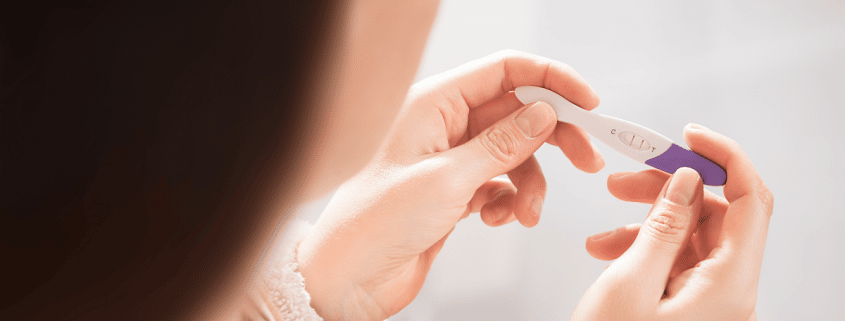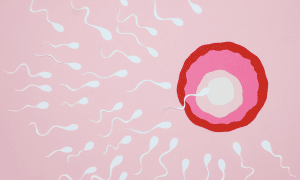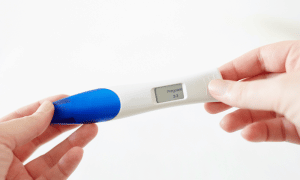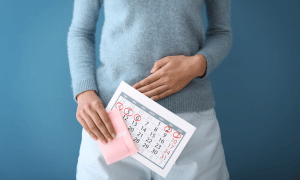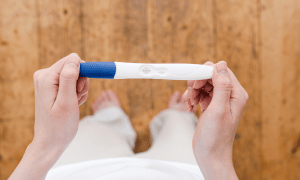Positive Pregnancy Test Then Negative 2 Hours Later – 4
When you are trying to conceive, the wait until you receive that positive pregnancy test result can feel like an eternity. When you finally do receive the positive results, it is certainly a joyous occasion- but what if, 2 hours after receiving the positive pregnancy test results you longed for- you receive a negative pregnancy test result? What does this mean? What causes it?
This article, “Positive Pregnancy Test Then Negative 2 Hours Later – 4 Reasons Why” discusses what may cause your pregnancy test results to change so suddenly, and more.
If you have received a negative pregnancy test, late period and white discharge, we have an article that too, Late Period, Negative Pregnancy Test & White Discharge – 7 Reasons Why.
Alternatively, if your negative pregnancy test turned positive after several hours, you can read our article.
In this article:
- How Do Pregnancy Tests Work?
- Pregnancy Symptoms
- 4 Reasons Why Your Pregnancy Test Changed From A Positive Test Result to a Negative Test Result in 2 Hours
- 1) False Positive or False Negative Results
- 2) Time of Day
- 3) Sensitivity of the Pregnancy Test
- 4) Chemical Pregnancy
How Do Pregnancy Tests Work?

Pregnancy tests are genius inventions; you pee on a stick, and it tells you whether or not you are pregnant. Pregnancy tests work by detecting the human chorionic gonadotropin (hCG) hormone in your urine, which gives it a positive test result. But where does the hCG hormone come from?
Your body only produces the hCG hormone when you are pregnant, or more specficially, after implantation occurs- the process where a fertilised egg, or blastocyst, implants itself into the lining of the uterus. It is through this connection that the blastocyst receives the blood supply and nutrients it requires to grow.
Implantation occurs between 6 and 12 DPO (or days past ovulation). It most commonly happens at 8 DPO, 9 DPO or 10 DPO. You can find out more about when implantation occurs here. Below are some early pregnancy symptoms and implantation symptoms:
Pregnancy Symptoms
- Morning sickness or nausea
- Sore boobs
- Bloating
- Digestive issues (e.g. constipation or diarrhea)
- Mild cramping (also known as implantation cramping)
- More leukorrhea (white discharge).
If you are not experiencing any pregnancy symptoms, you may still be pregnant! During very early pregnancy, most women do not show any symptoms of pregnancy.
4 Reasons Why Your Pregnancy Test Changed From A Positive Test Result to a Negative Test Result in 2 Hours
1) False Positive or False Negative Results
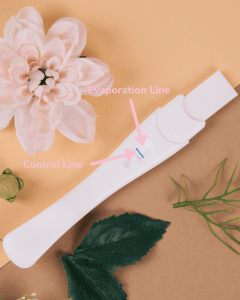
Home pregnancy tests tend to be 99% accurate, however, sometimes the pregnancy tests can show false or incorrect results. This may be why, 2 hours after receiving a positive result on a home pregnancy test, you may receive a negative result.
Here are some things you can do to avoid false negatives and false positives:
- Make sure you follow the pregnancy test instructions correctly. User error is one of the most common reasons why pregnancy tests show incorrect results. You should disregard any results shown after the specified time limit on the pregnancy test box (often around 10 minutes).
- Learn to differentiate between an evaporation line (which may be mistaken for a faint positive test) and a true positive result. Using a pink dye pregnancy test prevents the appearance of evaporation lines. We have an article on evaporation lines vs faint positives to help with this.
- Check the expiry date of the pregnancy test. As a general rule, if it has expired, toss it out!
- Use pregnancy tests from a reputable brand, such as clear blue.
- Did you know twins can cause a false negative test result?
2) Time of Day

If you are still early on in your pregnancy, the time of day in which you take your pregnancy test can determine whether your results will be positive or negative.
With your first morning urine, your urine is much more concentrated with higher hCG levels, which gives you the best chance of receiving a positive pregnancy test.
Later in the day, your hCG levels in your urine will decrease, as you become more hydrated, which may be why you received a positive pregnancy test result, followed by a negative pregnancy test result 2 hours later.
3) Sensitivity of the Pregnancy Test
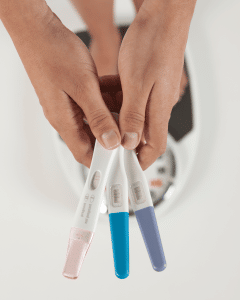
There is one specific factor of a pregnancy test that many women do not consider: the sensitivity- or how much hCG is required to show a positive test result.
For example, Clear Blue First Response Early Results pregnancy tests pick up on hCG concentrations as low as 6.5mlU/ml (or thousandths of an international Unit per Millimeter), meaning that its sensitivity is almost great enough to detect pregnancy shortly after implantation.
On the other hand, most pregnancy tests require a minmum of 10mlU of pregnancy hormones to show a positive pregnancy test result- or for you to wait until the first day of your missed period.
If you are in the early days of your pregnancy, and took a different kind of pregnancy test for each test, it may explain why your first pregnancy test result was positive, and then 2 hours later, the next test result was negative.
4) Chemical Pregnancy

A chemical pregnancy is considered to be a very early miscarriage- or a pregnancy loss that occurs before the fifth week of pregnancy.
Testing positive on a pregnancy test, and then receiving a negative pregnancy test result several weeks later, is a sign of a chemical pregnancy.
A chemical pregnancy is diagnosed when a home pregnancy test or blood test shows that you are pregnant (but the gestational sac is too small to be seen on an ultrasound scan) and then you receive a negative result further into your pregnancy.
Receiving a positive pregnancy test, which changes to a negative result in the following 2 hours, is unlikely to be caused by a chemical pregnancy, although it is possible if you tested just before your hCG levels dropped below the threshold to be detected on a pregnancy test.
My name is Louise and I am the Digital Marketing and Administrative Assistant at MyBump2Baby. I have been writing in the parenting niche for over 2 years specialising in fertility, pregnancy, baby and baby name support articles.



